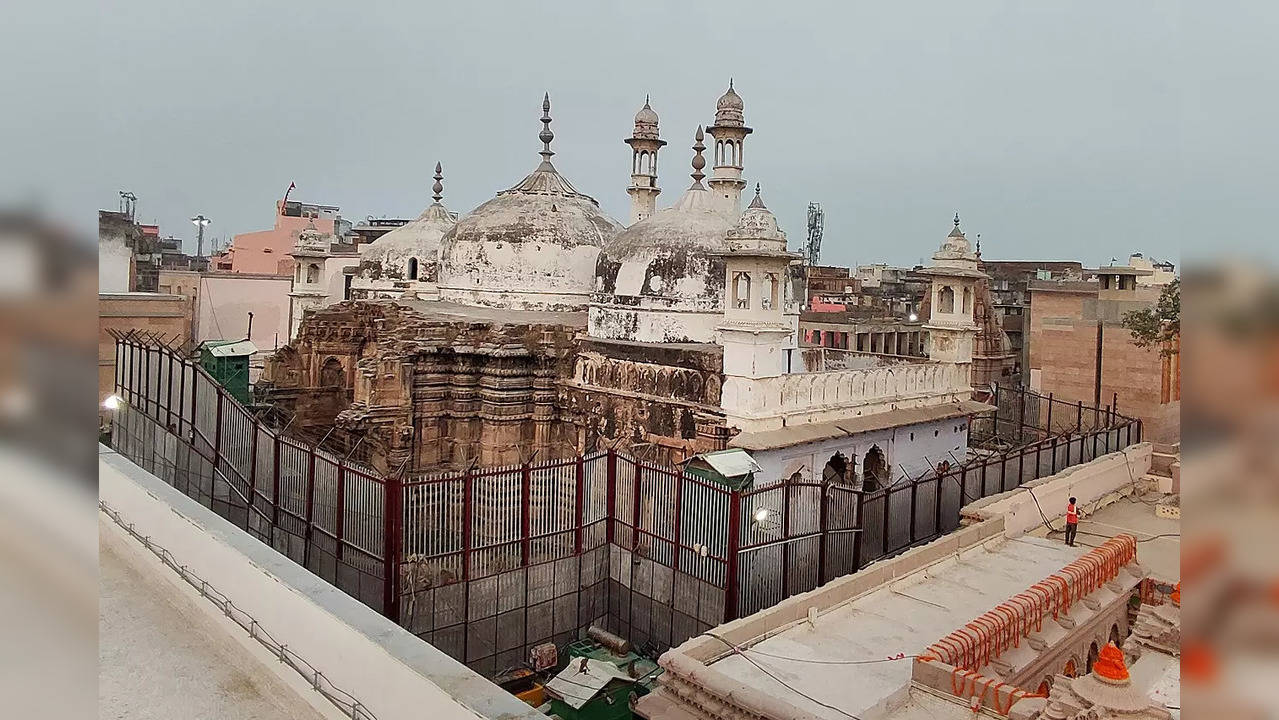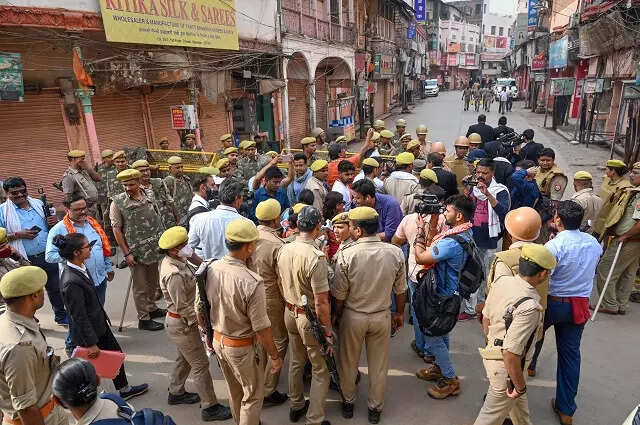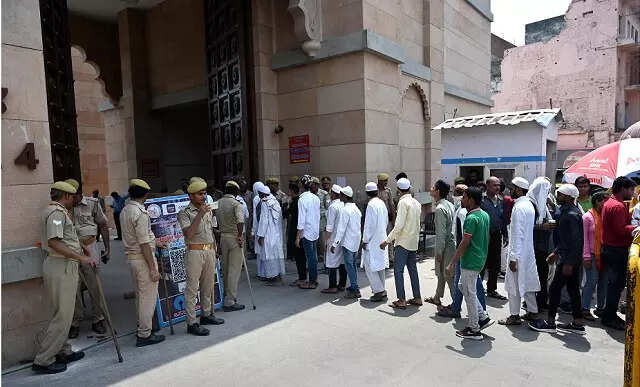Kashi Vishwanath temple was built and demolished 3 times – the known and unknown history
The history of Kashi Vishwanath temple is that of repeated and tragic blitz but also one of resilience…

Varanasi: In this December 12, 2021 file photo, view of Kashi Vishwanath Temple Dham and Gyanvapi Masjid complex, in Varanasi
Photo : PTI
KEY HIGHLIGHTS
- Kashi Vishwanath temple is one of the 12 main jyotirlingas whose first archaeological evidence dates back to 9th-10th BC
- It was renovated to grandeur during the Gupta period, a fact mentioned by Chinese historian Hsuan Tsang
- It was demolished repeatedly by invaders like Mohd Ghori, Mahmud Sharqi and Aurangzeb during different points in history
All those who have visited the Kashi Vishwanath temple would be aware of the presence of the beautiful and benign statue of Nandi, Lord Shiva’s bull. The statue is 2.1 metres in height and faces the wall of the Gyanvapi mosque. For those familiar with Hindu traditional architecture, Nandi is supposed to be facing the main deity Lord Shiva, either in the form of an idol or as the Linga, puzzling researchers for centuries as to the location of the actual sanctum sanctorum.
The history that we don’t know about…
Anecdotal history has it that when Mughal emperor Aurangzeb attacked Varanasi and ordered the demolition of the Kashi Vishwanath temple in the September of 1669, the priests of the temple had removed the Shivalinga and hid it in a well that exists between the Kashi Vishwanath temple and the Gyanvapi mosque. And thus, when the assaulters came, they could not find the central deity of the temple and it escaped harm. It is recorded history that Muslim invaders were iconoclasts who would disfigure idols of Hindu worship as damaged figures are not prayed to. So, while the assailants smashed the structure of the temple, its structure, and decorations, when they moved towards the Nandi to destroy it, a swarm of bees attacked them. The troops fled leaving behind the untouched statue of Shiva’s bull. Such is the anecdote.
Nearly a century after the attack by Aurangzeb, Queen Ahilyabai Holkar of Indore restored and reconstructed the Shiva temple near the Gyanvapi mosque and Maharaja Ranjit Singh of Punjab contributed by sending two tons of gold which encased the temple’s sanctum sanctorum. This is the shrine that we all visit in its present form. It is supposed to have been built within hugging distance of the original site but not over the primary place.
After many years of contest about the original location of the ancient temple, as per court order, a videography team has collected evidence to establish whether the main temple was at the site of the current day Gyanvapi mosque. It is said that some interesting findings have come forth from within the mosque like Sanskrit hymns written on pillars, flowers, and swastika signs as wall decorations, and under the Shringar Gauri rock has been discerned Vishnu's hood as well as Lord Brahma's lotus.

Photo : PTI
The most remarkable is the buzz about a Shivalinga being found in the well or pond which Muslim worshipers used for wazoo i.e. ablutions before prayers. While the Muslim side is contesting that it is actually a fountain, the petitioners say that that the structure found is undoubtedly a Shivalinga as there is no water duct in it and also because the Linga is located exactly in front of Nandi in terms of the direction.
Evidential history of Kashi Vishwanath’s past
But this is not the full story of the Kashi Vishwanath temple’s history, which is amongst the most important of the 12 jyotirlingas.
A seal of Avimukteshwara found in the Rajghat area near Adi Keshav Ghat of Varanasi indicates the existence of a shrine in the 9th or 10th BC. Avimukteshwara is another name for Shiva because he is believed to provide ‘mukti’ to those who die in Kashi.
Later, in the Gupta period, which was one of the pinnacle points of Hinduism and its revitalisation, a grand temple is believed to have been built around 500 CE by Vainya Gupta, who was a Shaivite king. Chinese pilgrim and historian Hsuan Tsang has mentioned the city of Varanasi as well as the temple in his recordings, describing the narrow lanes, dense population of courteous and wealthy people, and the omnipresence of Shiva’s worship.
This temple was demolished in the 12th century by Muhammad Ghori. It was later rebuilt in the 13th century in the reign of Sultan of Iltutmish, a Mamluk king who rose in his life after being purchased as an enslaved person by Qutb al-Din Aibak.

Later in the mid-15th century around 1447, Mahmud Shah Sharqi of Jaunpur again flattened it. Raja Todar Mal Built it again in 1585 along with scholar Pandit Narayan Bhatt only to be razed by Aurangzeb finally before being rebuilt.
Through centuries past, Kashi Vishwanath’s history is replete with episodes of the repeated blitz, attacks, and efforts to efface it from memory. But each time, the Jyotirlinga has shown exceptional resilience and capacity to rejuvenate and reinvigorate.
Trending:
End of Article
Subscribe to our daily Newsletter!





Related News





Sadhguru Lists 5 Things To Remember When You Vote

Why Politicians Make Excellent Social Media Content Creators

China’s Military's Agenda

Opinion | Gender Justice In AI Isn't Just About Fairness; It's A Strategic Call For India

Elections And Safety: The Role Of Candidate Selection In Addressing Crime Against Women In West Bengal









